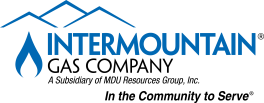Heating Incentives
| Eligible Appliance | Efficiency Rating | Rebate |
|---|---|---|
| Condensing Unit Heater | 90% AFUE or Greater Efficiency | $1,500 |
| Boiler Reset Control | N/A | $350 |
| High-Efficiency Condensing Boiler | 90% or Greater Thermal Efficiency and ≥300 kBTUh | $4.50/kBTUh |
You can apply for rebates directly from your customer account. Log in here to get started!
Kitchen Equipment Incentives
| Eligible Appliance | Efficiency Rating | Rebate |
|---|---|---|
| Fryer | ENERGY STAR® Certified | $800 |
| Steamer | ENERGY STAR® Certified (≥38% cooking eff/≤2,038 BTU/hr/pan Idle Rate) | $1,100 |
| Griddle | ENERGY STAR® Certified (≥38% cooking eff/≤2,650 BTU/hr/pan Idle Rate) | $200 |
Eligibility Requirements:
- Commercial customers of Intermountain Gas Company (IGC) served on its General Service (GS-1) rate schedule in the state of Idaho.
- Rebates apply only to the purchase and installation of new equipment, used equipment does not qualify.
- Customer must solely heat the property with natural gas provided by IGC to qualify for all space heating rebates.
- All equipment must be installed according to current code and approved by local or state inspection with the signed approved permit attached to the newly installed equipment.
- All equipment must be installed, and work completed by a licensed and bonded contractor. At its sole discretion, IGC may make eligible the work of other qualified contractors on a case-by-case basis.
Contact Information:
Dane Jacobsen
Commercial Energy Efficiency Analyst III
Email: [email protected]
Phone: 208-985-4040
Intermountain Gas Energy Efficiency Program
Email: [email protected]
Phone: 208-377-6840 – Treasure Valley
800-548-3679, Opt. 4 – all other areas

We want to know about your Building’s equipment. Please scan the QR Code and take our 5-minute survey and earn a $10 Gift Card!
Sign up for our email updates
Customers: log in to your account and go to your profile page to subscribe to our email updates to receive program updates and energy saving tips.
Contractors: enter your information here to receive email updates with program updates and training opportunities from the Energy Efficiency Program.
Frequently Asked Questions
As a general guideline, rebate applications must be submitted within 90 days of installation. Completion of large or complex projects may extend outside this timeframe and may be handled on a case-by-case basis. Please contact IGC at 800-548-3679, Opt. 4, with questions.
You will receive your rebate check in the mail.
Please allow for six to eight weeks for rebate processing.
Nope! As long as it meets the minimum efficiency requirements it is eligible.
Checklist of Common Energy-Saving Measures
Courtesy of ENERGY STAR®
Conduct a nighttime audit to find out what appliances are on afterhours that should be turned off.
✅ Improve operations and maintenance practices by regularly checking and maintaining equipment to ensure that it’s functioning efficiently
✅ Optimize start-up time, power-down time, and equipment
✅ Revise janitorial practices to reduce the hours that lights are turned on each day. Consider switching to day-cleaning, which takes place while occupants are in the building and has shown to also reduce complaints
✅ Review and emphasize the financial and environmental results of a preventative maintenance program for major systems and components
✅ Set goals and a methodology to track and reward
✅ Visually inspect insulation on all piping, ducting and equipment for damage (tears, compression, stains, etc.)
✅ Ask your utility if they offer free or inexpensive energy
✅ Retro or re-commission the building to make sure it’s running the way it was
✅ Consider energy audits to identify areas where building systems have become inefficient over time and bring them back to peak performance
✅ Repair leaking faucets: A dripping hot water faucet can leak hundred of gallons per year
✅ Swap out incandescent light bulbs with ENERGY STAR certified LEDs in your household
✅ Install occupancy sensors to automatically turn off lights when no one is present and back on when people return. Storage rooms, back-of-house spaces, meeting rooms, and other low-traffic areas are often good places to install them. And don’t forget — even good equipment can be installed incorrectly, so don’t install the sensor behind a coat rack, door, bookcase, etc. It must be able to “see” an approaching person’s motion to turn on the light as they enter an unlit room
✅ Examine the opportunity to switch from high-pressure sodium lamps to metal halide lamps in parking lots and consider upgrading to LED lighting for outdoor signage
LOW-COST MEASURES
✅ Set back the thermostat in the evenings and other times when the building isn’t too warm or cold
✅ Perform monthly maintenance of heating and cooling equipment to guarantee efficient operation throughout the year
✅ Regularly change or clean HVAC filters every month during peak cooling or heating season. Dirty filters cost more to use, overwork the equipment, and result in lower indoor air quality
✅ Plug air leaks with weather stripping
✅ Calibrate thermostats to ensure that their ambient temperature readings are correct, and adjust temperature set points for seasonal changes
✅ Use shades and blinds to control direct sun through windows in both summer and winter to prevent or encourage heat gain
- During cooling season, block direct heat gain from the sun shining through glass on the east and especially west sides of the facility. Depending on your facility, options such as “solar screens,” “solar films,” awnings, and vegetation can help. Over time, trees can naturally shade the facility and help clean the air. Interior curtains or drapes can help, but it’s best to prevent the summer heat from getting past the glass
- During heating season, with the sun low in the south, unobstructed southern windows can contribute solar heat gain during the day
✅ Make sure that areas in front of vents are clear of furniture and paper. As much as 25 percent more energy is required to distribute air if your vents are blocked
✅ Clean the evaporator and condenser coils on heat pumps and air-conditioners.
✅ Repair leaks and adjust pressure in compressed air
✅ Repair steam trap leaks; replace malfunctioning steam traps
✅ Repair damaged insulation and replace missing insulation with thicknesses calculated for the operating and ambient conditions of the mechanical system
✅ Keep exterior doors closed while running your HVAC. It sounds simple, but it will help avoid wasteful loss of heated or cooled air! If your building is equipped with revolving doors, encourage or require their use as opposed to swinging doors
RAPID PAYBACK MEASURES
✅ Tune up your heating, ventilation, and air conditioning (HVAC) system with an annual maintenance contract. Even a new HVAC system, like a new car, will decline in performance without regular maintenance. A contract automatically ensures that your HVAC contractor will provide “pre-season” tune-ups before each cooling and heating season. Your chances of an emergency HVAC breakdown also decrease with regular maintenance
✅ Install variable frequency drives (VFDs)
✅ Balance air and water
✅ Install window films and add insulation or reflective roof coating to reduce energy
LOW-COST MEASURES
✅ Create a mechanism for occupants or employees to share their suggestions with you. Make sure you respond to comments and act on recommendations when feasible. You may even offer a reward for the best energy-saving ideas
✅ Educate staff members about the basic principles of energy management and empower them to establish their own departmental green teams. Check out the ENERGY STAR Green Team Checklist for steps and considerations to take into account when establishing a green team
✅ Share your energy efficiency goals. Transparency is the first step to getting the people inside your building or space interested in what you’re doing
✅ Display the past 6–12 months of energy use information in a high-traffic area or distribute it as part of a regular report. Seeing the data and any trends in energy use can inspire occupants and employees to contribute to continued savings
✅ Encourage actions that apply to most of your employees’ workspaces, or that can be practiced at work and at home, like turning off lights when not in use and activating computer power management features
✅ Print and hang banners, posters, and signs with energy-saving messages in high-traffic areas in your space or in areas like lobbies, elevators, hallways, over water fountains, and in break rooms
✅ Create door hangers, post-it note reminders, or light switch covers to help occupants or employees remember to take action. Some K-12 schools have started energy patrols, in which students pass out “oops” and “wow” stickers to encourage behavior change
✅ Hold an energy fair, conduct an energy awareness event in the lobby, or offer building tours to give occupants a sneak peek at the inner workings of the building
✅ Host a brownbag, hold a webinar, or present about why it’s important to save energy at staff meetings, tenant meetings, or other get-togethers. You can also integrate information about your energy program into your organization’s orientation training
✅ Give incentives and recognition. Consider starting small with something like a pizza party, ice cream social, bagel breakfast, or other food rewards for hitting goals or making progress. Depending on savings levels, you may also consider awarding cash or prizes for great energy- saving ideas or to energy champions

